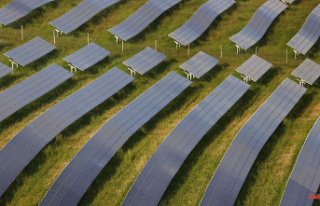There were great fears that there would be gas shortages after the Russian war of aggression in Ukraine. Now it turns out that there is more gas in storage in Thuringia than usual at this time of the year.
Erfurt (dpa/th) - Thuringia got through the winter better than expected in terms of gas consumption. The gas storage facility near Ebeleben in the Kyffhäuser district was still about 60 percent full at the end of winter, Environment Minister Bernhard Stengele (Greens) told the German Press Agency in Erfurt. At the same time in 2022, and thus before the supply of Russian natural gas was stopped, the storage facility was only around half full. "The fears that gas could become scarce were unfounded," said the Green politician.
Many private households as well as companies have reduced their consumption. "This shows that there are ways to save and use gas more efficiently without drastic cuts." It would be good if gas was saved - also from an environmental point of view.
Irrespective of this, it is important to accelerate the expansion of energy production from renewable sources, said the minister. There is good progress in Thuringia with electricity from solar systems. But he also sees a lot of potential in solar thermal energy - i.e. heat generation through solar systems. "We have to strengthen that," said Stengele. Systems for obtaining hot water could also be of interest to consumers from a cost-benefit perspective. They could also replace part of the gas consumption for hot water preparation in summer.
Not only in Thuringia are the gas storage tanks still relatively full. The energy company VNG reported in Leipzig that its underground storage facilities in Bad Lauchstädt and Bernburg in Saxony-Anhalt are currently around two-thirds full. VNG Gasspeicher GmbH also operates two other storage facilities in Lower Saxony, which, according to the European transparency platform AGSI, are also half or more full. By law, the storage operators were obliged to a minimum filling quantity of 40 percent as of February 1st.












